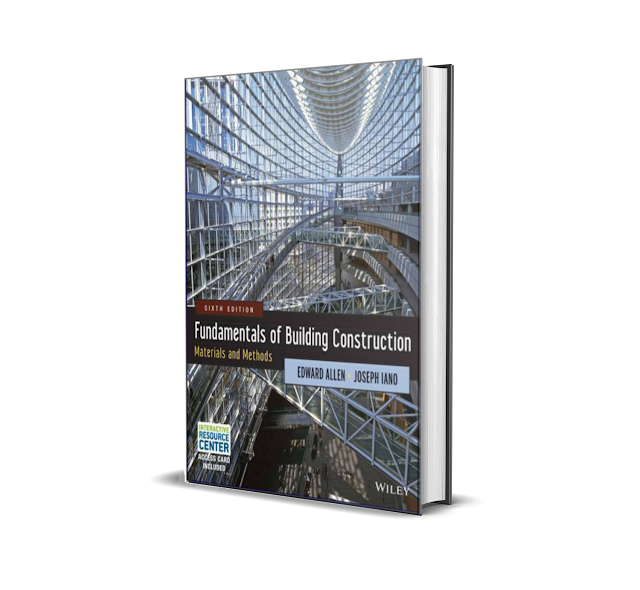Download Fundamentals of Building Construction Easily In PDF Format For Free.
PREFACE:
First published a quarter-century ago, Fundamentals of Building Construction: Materials and Methods, now in its sixth edition, has wrought a revolution in construction education. It has been instrumental in making a previously unpopular area of study not merely palatable but vibrant and well liked. It has taken a body of knowledge once characterized as antithetical to design excellence and made it widely recognized as being centrally relevant to good building design.
It has replaced dry, unattractive books with a well-designed, readable volume that students value and keep as a reference work. It was the first book in its field to be even-handed in its coverage and profusely and effectively illustrated throughout. It was the first to release the teacher from the burden of explaining everything in the subject, thereby freeing class time for discussions, case studies, field trips, and other enrichments. Gaining a useful knowledge of the materials and methods of building construction is crucial and a necessity for the student of architecture, engineering, or construction, but it can be a daunting task.
The field is huge, diverse, and complex, and it changes at such a rate that it seems impossible ever to master it. This book has gained its preeminent status as an academic text in this field because of its logical organization, outstanding illustrations, clear writing, pleasing page layouts, and distinctive philosophy.
It is integrative, presenting a single narrative that interweaves issues of building science, materials science, legal constraints, and building craft so that the reader does not have to refer to separate parts of the book to make the connections among these issues. Building techniques are presented as whole working systems rather than component parts. It is selective rather than comprehensive. This makes it easy and pleasant for the reader to gain a basic working knowledge that can later be expanded, without piling on so many facts and figures that the reader becomes confused or frightened away from wanting to learn about construction.
Reading other texts was once like trying to drink from a fire hose; reading this one is like enjoying a carefully prepared meal. It is empowering because it is structured around the process of designing and constructing buildings.
The student of architecture will find that it features the design possibilities of the various materials and systems. Students interested in building or managing the construction process will find its organization around construction sequences to be invaluable. The book is necessarily complex without being complicated.
It avoids the dilemma of having to expand ad infinitum over time by presenting the basic construction systems, each in sufficient detail that the student is brought to an operational level of knowledge. It deals, as its subtitle indicates, with fundamentals.
In this latest edition, we have updated and revised many portions of the text. To name a few, in Chapter 1, an expanded discussion of buildings and the environment reflects the continuing evolution and maturation of sustainable building practice. Attention to the role of the constructor and to considerations of construction management continues to receive more in-depth consideration. Many facets of foundations and sitework have been updated in Chapter 2.
Chapters 3 through 7, covering wood materials and construction systems, have been extensively updated: An entirely new construction system, cross-laminated timber, is introduced; a greater emphasis is given to manufactured wood products, reflecting this trend within the industry; and the influence of the most recent energy codes and sustainability standards on the enclosure of these building systems is reflected in revised text and updated illustrations.
Throughout the remaining portions of the text, new developments in materials and methods, sustainable practices, and building regulations have been incorporated. Finally, a special effort was made to update illustrations and photographs, both to ensure currency of information and to provide the greatest possible visual interest for the reader .









Comments
Post a Comment